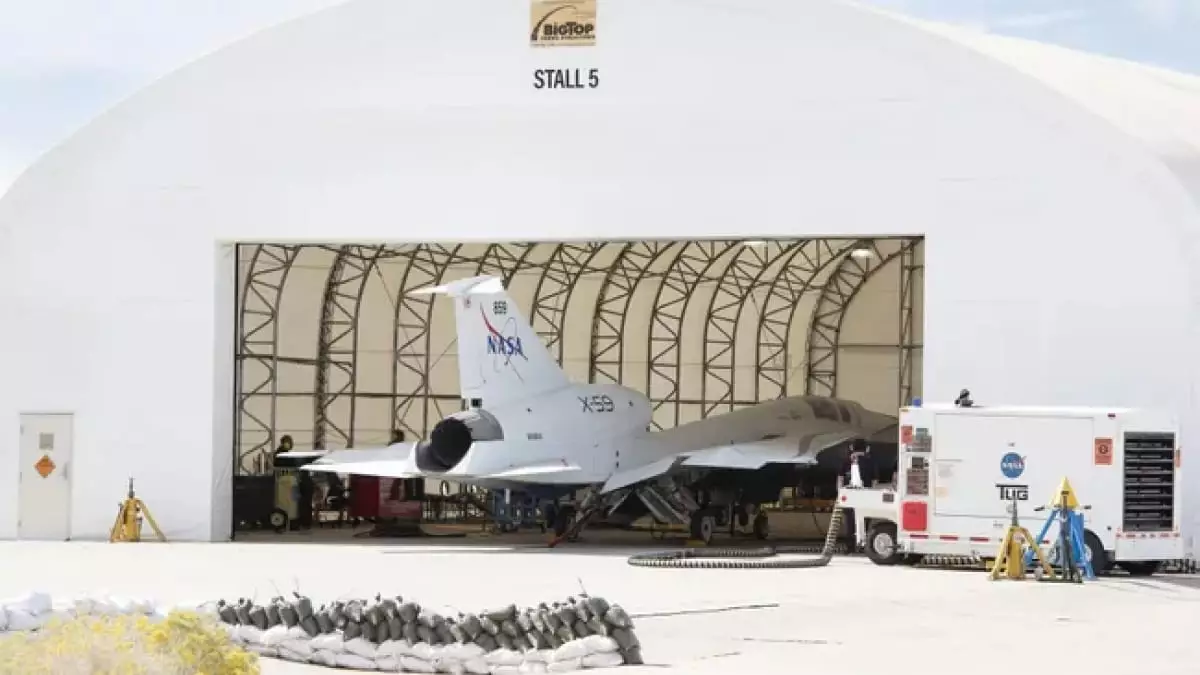NASA is on the brink of revolutionizing air travel with its experimental X-59 Quiet SuperSonic Technology (Quesst) aircraft, which has just completed an essential milestone in its development. With the successful activation of its engine for the first time, researchers and engineers are one step closer to the aircraft’s maiden flight. This event is noteworthy not only for its scientific significance but also for its potential to reshape aerial regulations and make supersonic travel accessible over populated regions.
Since late October, rigorous testing has been conducted at Lockheed Martin’s Skunk Works facility in Palmdale, California. The phased engine tests are designed to assess the X-59’s performance as well as the integration of various systems within the aircraft. Initial tests began at lower speeds, allowing engineers to identify potential issues such as leaks and to verify the effectiveness of critical systems, including hydraulics and electrical components. Once these foundational checks were complete, engineers ramped up the performance, fully powering the engine for the first time. Jay Brandon, the chief engineer for the X-59 project at NASA, explained that this step was fundamental in verifying that the engine would operate effectively and could support the aircraft’s various functions.
Central to the X-59’s design philosophy is its capacity to achieve supersonic speeds while mitigating the traditional sonic boom. Utilizing a modified F414-GE-100 engine, which shares lineage with those used in the Navy’s F/A-18 Super Hornet, the aircraft is engineered to operate at Mach 1.4 at an altitude of 55,000 feet. The elongated and streamlined nose, measuring over 11 meters, has been meticulously crafted to convert the disruptive sonic boom into a much less jarring “thump.” Through simulations using existing F/A-18 jets, NASA has begun predicting the sound levels associated with the X-59, paving the way for potential changes in airspace regulations that allow for quieter supersonic travel in urban areas.
One of the most striking elements of the X-59 is its revolutionary cockpit, which notably lacks a conventional forward-facing window. Instead, pilots will depend on an “eXternal Vision System,” which delivers a comprehensive forward view through a digital interface. This system blends camera feeds with augmented reality, positioning pilots to adapt to the unique challenges presented by the aircraft’s design. As Pam Melroy, NASA’s Deputy Administrator, articulated, this feature is essential for overcoming visibility issues that might arise during flight.
As the project moves forward, upcoming phases of testing will focus on assessing the aircraft’s performance during various simulated scenarios. Ground testing will include taxi trials aimed at evaluating operational functionality before the X-59 takes to the skies. Once airborne, the aircraft is set to fly over chosen U.S. cities, collecting data on public reactions to its uniquely quiet sound profile. Insights gained from these flights will be instrumental in demonstrating the feasibility of commercial supersonic travel while maintaining minimal noise disturbance, a critical factor in its acceptance.
NASA’s X-59 quietly represents the forefront of aviation technology—its successful tests open doors to innovations that could significantly enhance air travel experiences, making faster journeys a reality while addressing the noise concerns traditionally associated with supersonic flights. As we continue to observe this exciting journey toward a more sustainable aerial future, the implications for commercial applications are promising and far-reaching.


Leave a Reply